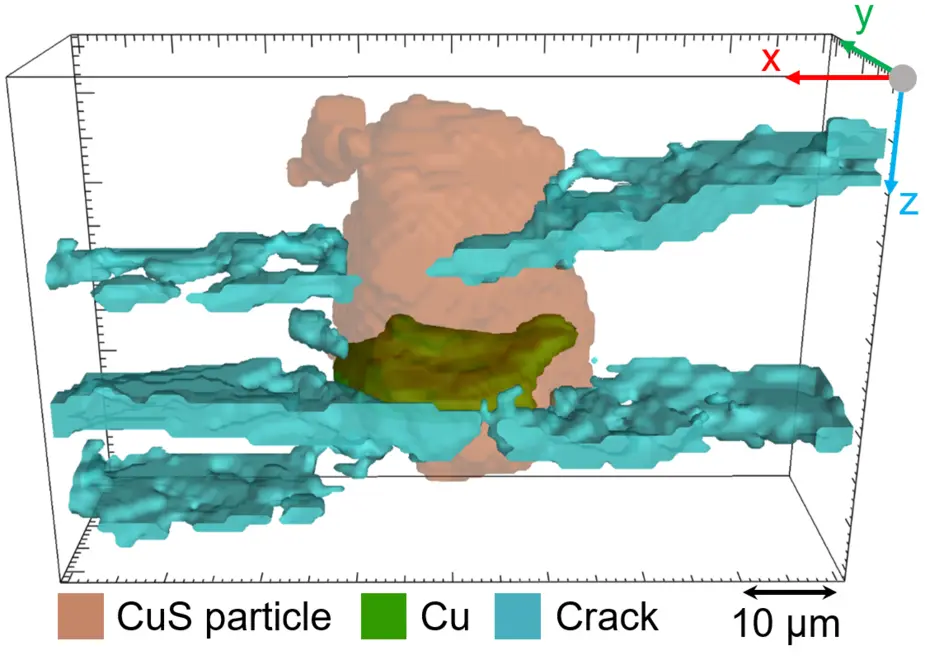Tomography shows high potential of copper sulphide solid-state batteries
Researchers from HZB, Hereon, HU and BAM succeed in observing solid-state batteries during charging and discharging

Solid-state batteries enable even higher energy densities than lithium-ion batteries with high safety. A team led by Prof. Philipp Adelhelm and Dr. Ingo Manke succeeded in observing a solid-state battery during charging and discharging and creating high-resolution 3D images. This showed that cracking can be effectively reduced through higher pressure.
Solid-state batteries (SSBs) are currently regarded as a promising battery technology of the future. Compared to the current lithium-ion batteries, which are used in mobile phones, laptops and electric vehicles, SSBs could achieve even higher energy densities and better safety. In addition to research institutes, all major automotive companies are therefore also researching this technology. The main feature of the technology is that the highly flammable liquid electrolytes of lithium-ion batteries are replaced by a solid. The entire battery is therefore consists of only "solid materials", hence the name solid-state battery. In order to produce such a battery, different materials (anode, cathode and electrolyte) must be pressed together under high pressure.
Researchers from the Helmholtz-Zentrum Berlin and Hereon, Humboldt-Universität zu Berlin and the Federal Institute for Materials Research and Testing have now succeeded in observing the processes within such a solid-state battery during charging and discharging. The team led by Prof. Philipp Adelhelm and Dr. Ingo Manke investigated the behavior of copper sulfide, a naturally occurring mineral, as a cathode in a solid-state battery. Lithium was used as anode. A special feature of the battery is that large copper crystallites form during discharge. The formation of large crystallites enables a detailed investigation of the reaction by means of X-ray tomography. Thus, the (dis)charge reaction could be traced in 3D and for the first time the movement of the cathode particles within the battery could be tracked. In addition, it was shown that cracking can be effectively reduced by higher pressure. "For the complex measurements, we had to make some compromises and carry out many reference experiments," explains Dr. Zhenggang Zhang and Dr. Kang Dong, the joint first authors of the publication. "However, the results provide detailed insights into the inner workings of a solid-state battery and show how its properties can be improved."
Note:
The project was funded by the German Federal Ministry of Education and Research (NASEBER and KAROFEST projects) and the China Scholarship Council. At Helmholtz-Zentrum Berlin, research into solid-state batteries using tomography will soon be further expanded. For example, the Federal Ministry of Education and Research is funding the construction of a new tomography laboratory (TomoFestBattLab) with 1.86 million euros.
Contact:
Prof. Dr. Philipp Adelhelm
Research Group Operando Battery Analysis
philipp.adelhelm(at)helmholtz-berlin.de
Dr. Ingo Manke
Head of Imaging Group
Institute Applied Materials
manke(at)helmholtz-berlin.de
+49 030 8062 42682
Press release Helmholtz-Zentrum Berlin (HZB) 28.11.2022